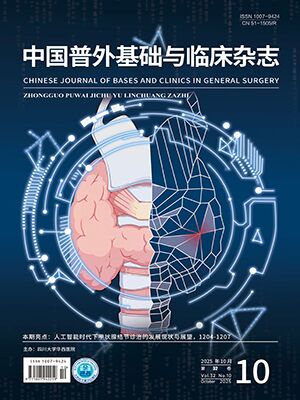Objective To systematically review the clinical risk factors, mechanisms, diagnostic strategies, and therapeutic advances in spontaneous rupture of hepatocellular carcinoma (SR-HCC), aiming to optimize clinical decision-making. Method A comprehensive analysis of recent literature on SR-HCC was conducted to summarize the latest advancements in its epidemiological characteristics, risk factors, underlying mechanisms, diagnostic approaches, and treatment modalities. Results Risk factors for SR-HCC included tumor diameter >5 cm, exophytic tumor growth, moderate-to-massive ascites, elevated alpha-fetoprotein level, portal vein invasion, and chronic liver disease. The pathogenesis involved the following aspects. ① Tumor-specific growth dynamics: rapid proliferation causing tissue destruction, vascular compression, and intratumoral ischemia-necrosis. ② Tumor microenvironment alterations: chronic inflammation, thin-walled neovessels, hypoxia-induced matrix degradation increased the risk of SR-HCC. ③ Vascular injury: elastin degeneration, collagen degradation, and deposition of immune complexes led to increased vascular fragility. ④ Background of underlying liver diseases: cirrhosis-related hemodynamic instability and tissue fragility caused rupture. Diagnosis relied on clinical manifestations (acute abdominal pain, shock, intraperitoneal hemorrhage) and imaging. Contrast-enhanced CT showed 100% accuracy for active bleeding detection, ultrasound aided screening, and MRI was used for stable patients. Treatment strategies encompassed conservative therapy, interventional procedures (hemostasis success rate: 53%–100%, preferred for hemodynamically unstable cases but risk hepatic failure in patients with MELD ≥13 points), emergency surgery (high mortality: 16.5%–100%), staged resection (transcatheter arterial embolization followed by elective surgery with 45% of 5-year survival rate vs. 12-month median survival for conservative therapy), and radiofrequency ablation (limited evidence for hemostasis, safety/efficacy required further validation). Conclusions SR-HCC is a life-threatening complication influenced by multifactorial risks and complex molecular mechanisms. Early identification of high-risk patients, combined interventional and staged surgical approaches, and personalized treatment are critical for improving outcomes. Future research should focus on elucidating molecular pathways and refining risk assessment models and integrated therapeutic strategies.
Citation:
DONG Yunfang, LIU Feng, CHEN Peng. Advances in mechanisms, diagnosis, and treatment of spontaneous rupture of hepatocellular carcinoma. CHINESE JOURNAL OF BASES AND CLINICS IN GENERAL SURGERY, 2025, 32(7): 903-910. doi: 10.7507/1007-9424.202501084
Copy
Copyright © the editorial department of CHINESE JOURNAL OF BASES AND CLINICS IN GENERAL SURGERY of West China Medical Publisher. All rights reserved




